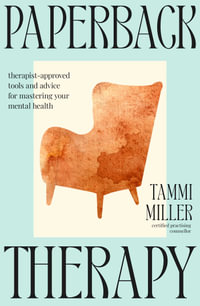This autoethnographic volume gathers a multiplicity of different voices in autoethnographic research from across psychology and mental health disciplines to address topics ranging from selfhood, trauma, emotional understanding, clinical psychology, and the experience of grief.
Edited by two leading figures, this volume broadens the concept of psychology beyond its conventional, mainstream academic boundaries and challenges pre-conceived and received notions of what constitutes 'psychology' and 'mental health'. This book collects new autoethnographic writers in psychology and mental health from across as diverse a range of disciplines and, in doing so, makes a strong case for the legitimacy of subjectivity, emotionality and lived experience as epistemic and pedagogic resources. The collection also troubles the related concept of 'mental health.' In contemporary times, this is either biomedically over-colonised (welcomed by some but resisted by others), often regarded by lay and professional people alike in terms of an 'ordered or disordered' binary (comforting for some but associated with stigma and othering for others), or, at worst, is reduced to a set of hackneyed memes - the stuff of Breakfast television (well-intentioned and undoubtedly reassuring and helpful for some but patronising and na ve for others). Overall, the volume promotes the subjective and lived-experiential voices of its contributors - the hallmark of autoethnographic writing.
Autoethnographies in Psychology and Mental Health will be of interest to psychology and mental health students and professionals with an interest in qualitative inquiry as it intersects with autoethnography and mental health.
Industry Reviews
What are the possible scenarios when bringing several voices together to make up a book? The voices might form a melodious and soothing harmony. An undisturbing treat for the mind and soul. Alternatively, the voices may collide in a cacophonic noise battle. A discordant attack on the senses and thoughts. This book and its voices offer the best from both these scenarios. Put together, these new, creative, and bold voices make up a polyphony. Each voice offers something on its own terms, each chapter lingers on as an individual melody that showcases how subjectivity is key to developing knowledge about human experiences. And yet, when played together as a polyphonic orchestra, the individual melodies also offer something much more. As a whole, the book offers harmony and cacaphnoy. Could you ask for more?
- Professor Trude Klevan, University of South-Eastern Norway
























